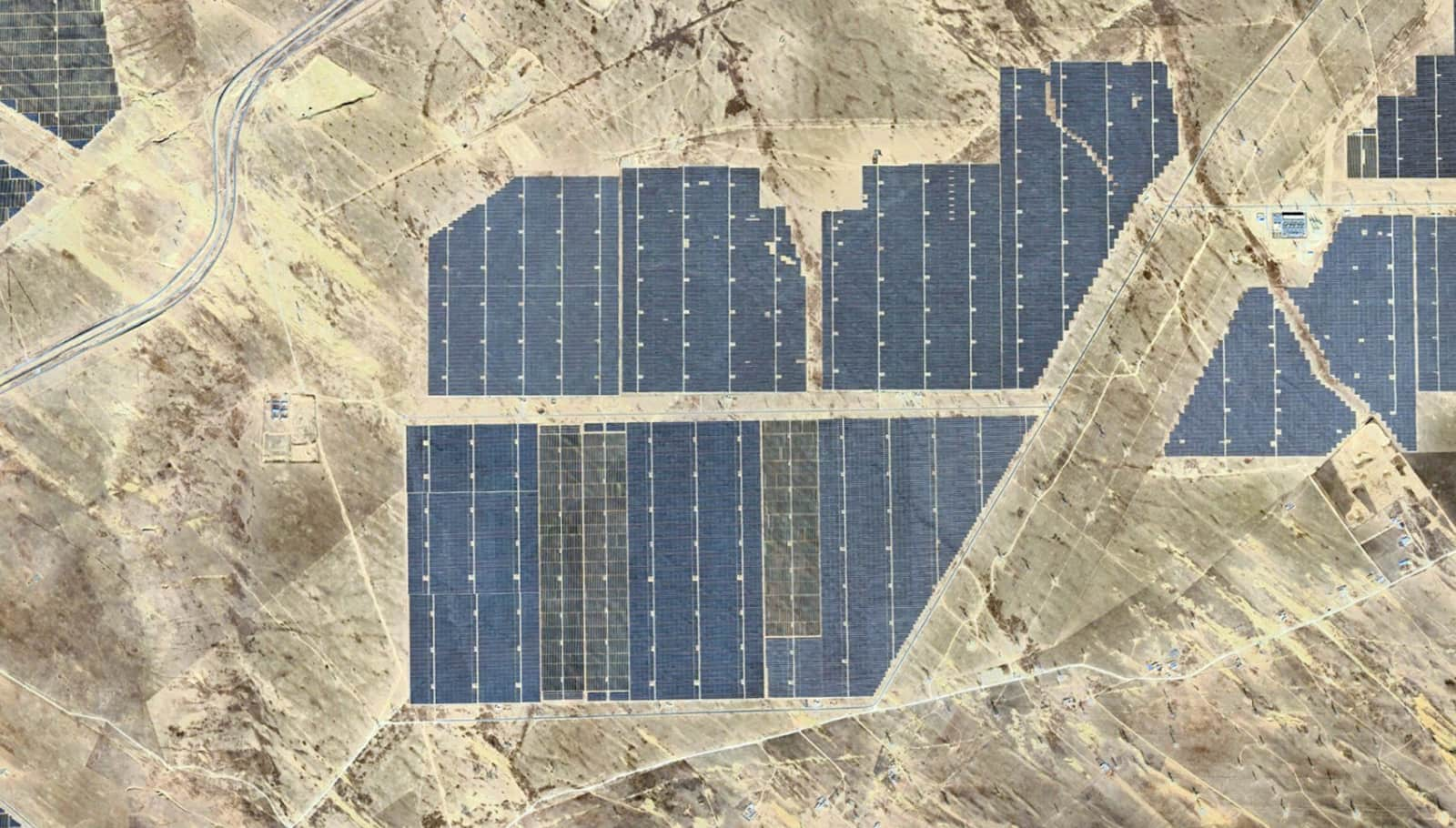
Longyangxia Dam Solar Park. Photo courtesy of NASA.
China is rapidly scaling up its solar and wind energy infrastructure, accounting for nearly three-quarters of all utility-scale projects currently under construction worldwide, according to a new report from the Global Energy Monitor (GEM). With 510 gigawatts (GW) already under construction and a total pipeline of over 1.3 terawatts (TW), China is consolidating its position as a dominant force in the global energy transition.
This acceleration follows years of sustained growth. As of early 2025, China’s operating solar and wind capacity has reached 1.4 TW—equivalent to 44% of the global total and more than the combined capacity of the European Union, United States, and India. In the first quarter of this year, wind and solar supplied 22.5% of the country’s electricity, overtaking thermal power capacity for the first time.
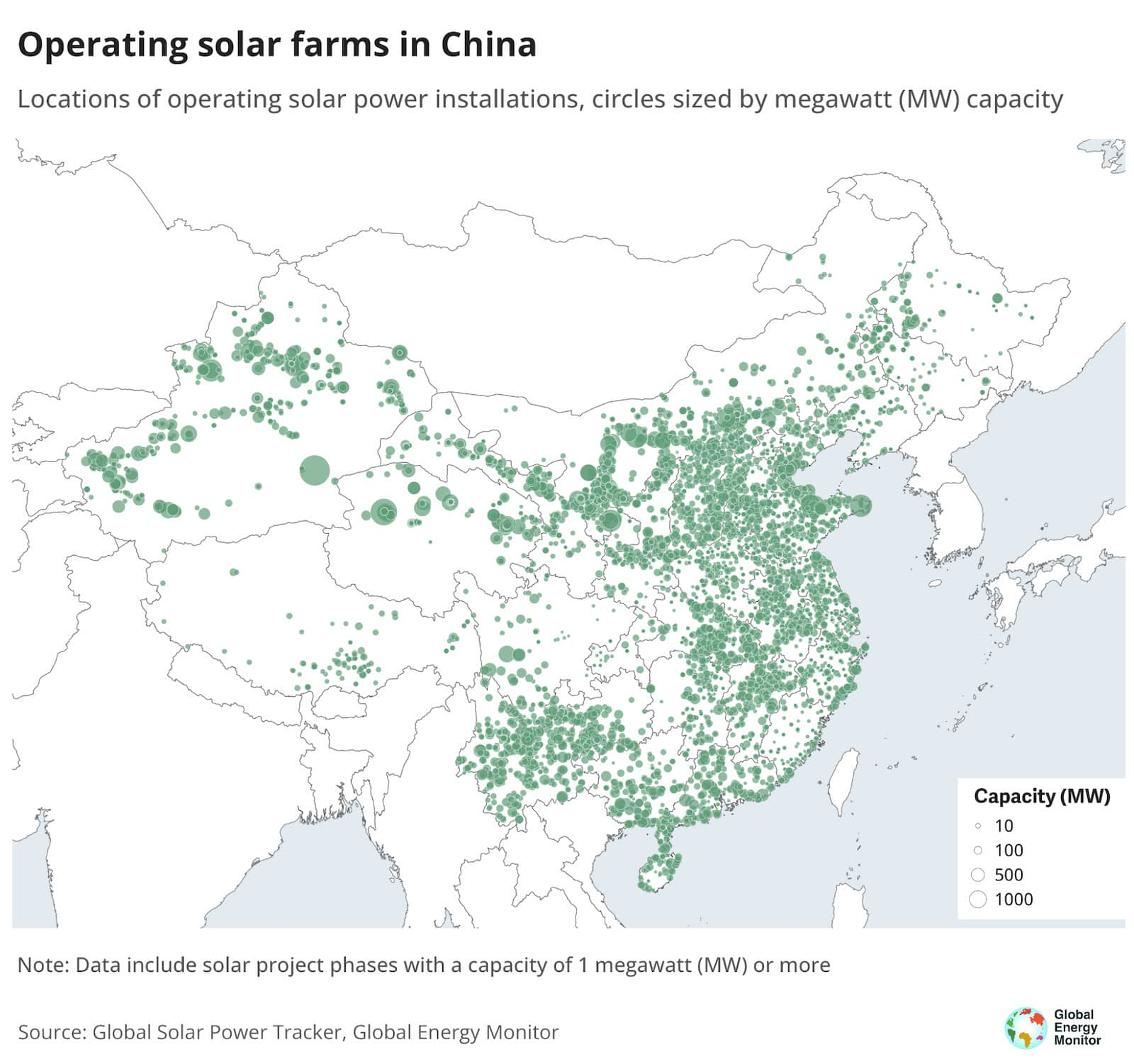
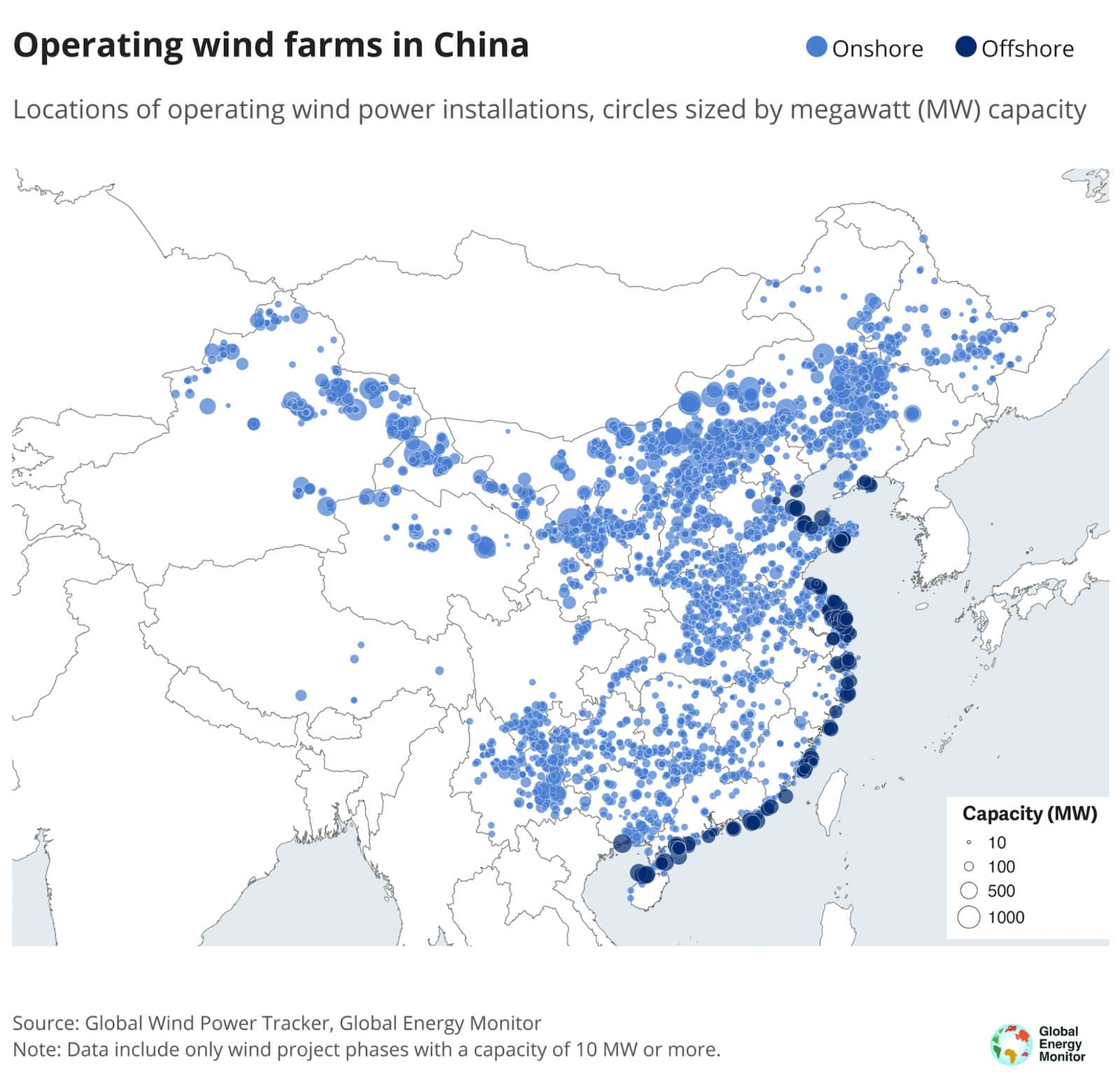
The majority of China’s new capacity is coming from centralized utility-scale projects, particularly in northern and western regions such as Xinjiang and Inner Mongolia, which host nearly 40% of the country’s planned solar and wind capacity. In 2024 alone, China added 278 GW of solar and 46 GW of wind.
Offshore wind is emerging as a growing component of China’s renewable energy mix. From under 5 GW in 2018, offshore wind capacity has expanded to 42.7 GW as of March 2025—more than half of global offshore capacity in construction. The technology is gaining traction in coastal provinces like Jiangsu and Guangdong, which together account for over half of the country’s installed offshore wind. These regions are also piloting initiatives to link offshore wind to heavy industry and green hydrogen production.
Despite the rapid buildout, offshore wind faces challenges. Following the phaseout of national subsidies in 2021, annual additions dipped before rebounding modestly. In response, some provinces introduced localized incentives to sustain momentum. Analysts at GEM note that further policy coordination may be needed to maintain the pace of development, especially in deeper waters where floating platforms and typhoon-resilient designs are required.
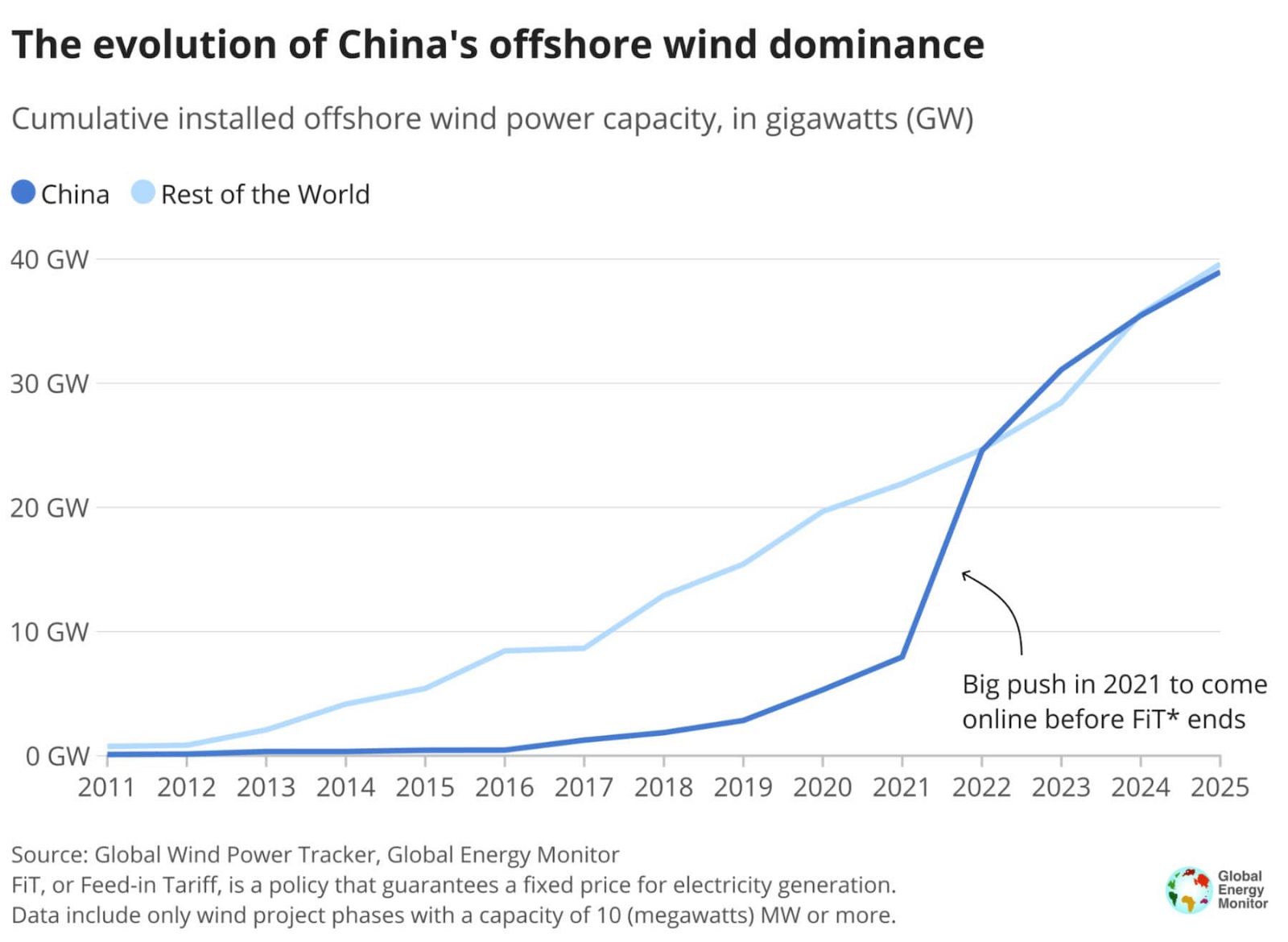
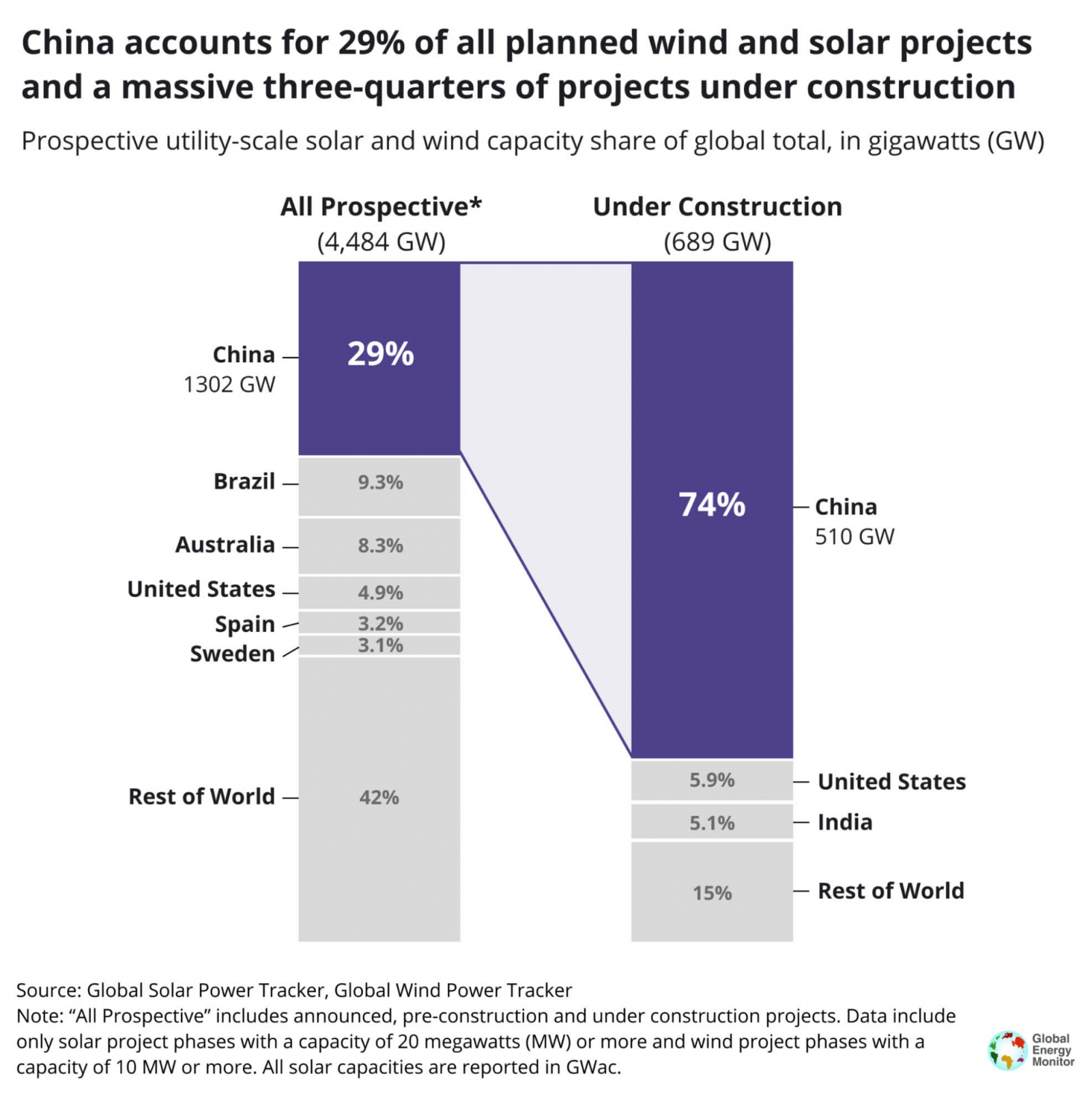
China’s offshore wind pipeline now includes nearly 67 GW in various stages of development, with over 40% under construction. New pilot projects aim to integrate offshore wind with emerging technologies such as underwater data centers and direct electrification of industrial complexes.
While fossil fuel development continues alongside renewables, China’s current trajectory suggests a growing shift in how the country meets its energy demands. With new capacity expected to come online at a record pace this year, China’s solar and wind expansion is reshaping the global energy landscape.
This article was originally published on Mongabay under the Creative Commons BY NC ND licence. Read the original article.
.jpg)





